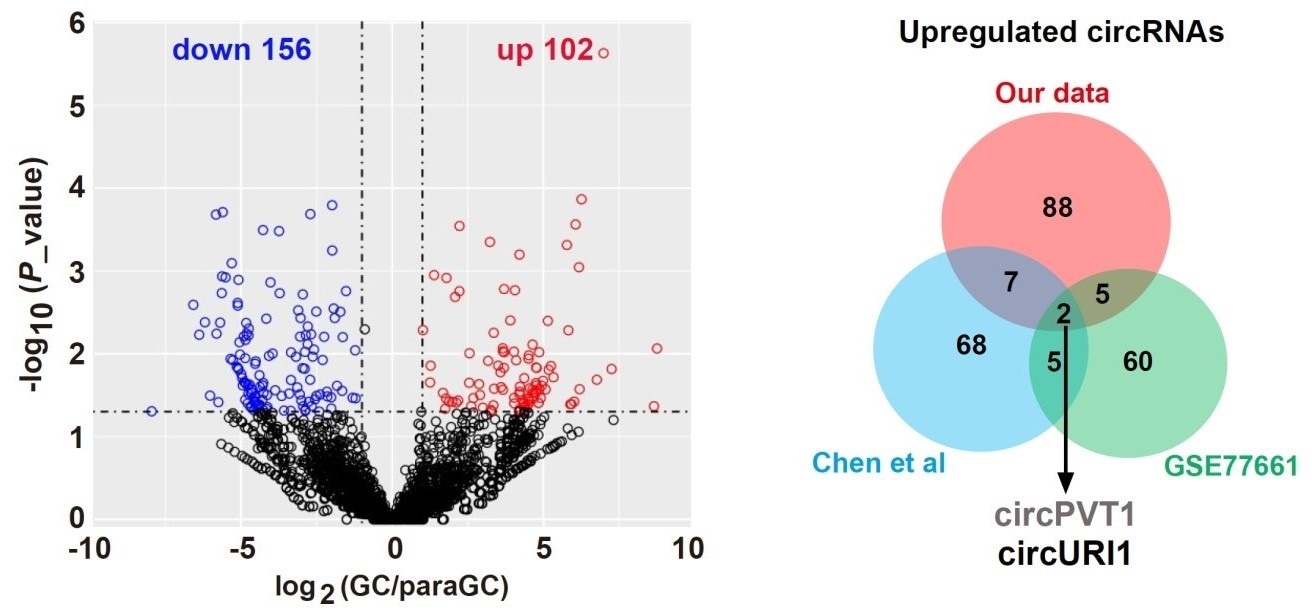Reviewed by Dan Hutchins, M.PhilAug 23 2021
At the Chinese Academy of Sciences (CAS), scientists have now come up with a mechanism used by circular RNA (circRNA) to inhibit the metastasis of gastric cancer cells.

Identification of circURI1. Image Credit: Xiaolin Wang.
Dubbed circURI1, this circRNA applies an anti-metastatic effect by sequestering heterogeneous nuclear ribonucleoprotein M (hnRNPM) to regulate alternative splicing in gastric cancer. This association between circRNA and alternative splicing is the first-ever reported one. The study has been published online in Proceedings of the National Academy of Sciences.
Across the world, gastric cancer is the fifth most common malignant type of tumor and the third leading reason for cancer-related deaths. This is mainly because of its metastatic spread in patients. CircRNAs are a category of natural covalent closed single-stranded RNA molecules that have turned into main regulators of human cancers. However, their modes of action in gastric cancer are not yet clear.
The researchers were headed by Prof. Wenchu Lin of the Hefei Institutes of Physical Science (HFIPS), together with Prof. Ge Shan and Associate Prof. Shanshan Hu from the University of Science and Technology of China, to perform gastric cancer circRNA profiling. They found that circURI1 has higher expression in gastric cancer than corresponding non-tumor tissues.
After performing loss-of-function and gain-of-function studies, the researchers found that circURI1 repressed gastric cancer metastasis in vivo and cell migration and invasion in vitro.
CircURI1 mechanistically acts directly to interact with hnRNPM in a sequence-dependent way to regulate alternative splicing of a subset of genes associated with cell migration, thereby inhibiting gastric cancer metastasis.
This research offers a new point of view on the molecular basis of cancer metastasis by unraveling the activity of circRNAs. It also proposes that circURI1 may have a key role in the diagnosis and treatment of gastric cancer.
The study was financially supported by the National Natural Science Foundation of China, the National Key Research and Development Program of China, the Science and Technology Major Project Program of Anhui Province, and the Strategic Priority Research Program, “Biological Basis of Aging and Therapeutic Strategies” of CAS.
Source:
Journal reference:
Wang, X., et al. (2021) CircURI1 interacts with hnRNPM to inhibit metastasis by modulating alternative splicing in gastric cancer. Proceedings of the National Academy of Sciences. doi.org/10.1073/pnas.2012881118.